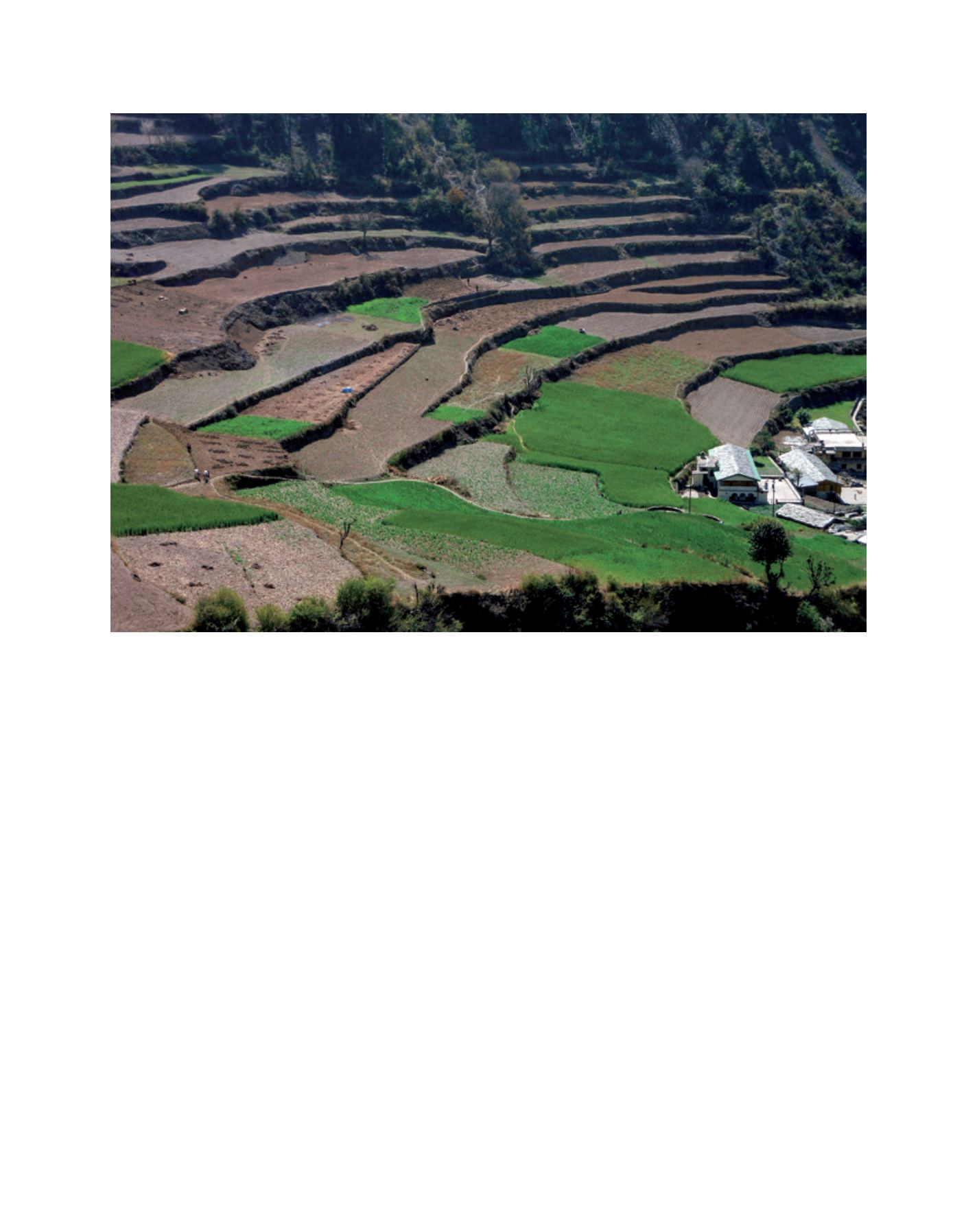

[
] 81
increase in the recent past. Earlier, everything was managed
through local resources or farm produce. Only salt and
sugar had to be sourced from other places. The changing
consumption pattern became market dependent. This new
trend brought the loss of essential micronutrients leading
to several physiological disorders.
This interdependence pattern of forest agriculture
and animal husbandry is peculiar to the family farms of
Himalaya. Strategies must be targeted to make mountain
farms sustainable. It is important to support these farms
through a variety of inputs in the form of nutritionally rich,
climate-suitable crops with back-end assistance for post-
harvest, and to develop market intelligence for the farmers’
specific produce.
Family farming can only be lifted when all interlink-
ing factors are also involved in the development process,
where tradition and new knowledge are amalgamated. It
must be given essential inputs to take it from subsistence
to surplus, from nutritional deficit to nutritionally secure,
and from uneconomic to viable. All age-old practices that
exist within a family farm need to be improved. Crop selec-
tion, varietal cultivation and other inputs must be given
with due respect to ecosystem relevance. Fruit yards and
vegetable yards can offer supplementary food and nutri-
tion for local consumption. The traditional practice, where
marginal farmers grow fruit and vegetables in their back
yards, needs to be improved with better agronomic inputs.
The forest can be recuperated through family or commu-
nity forestry with indigenous species. Besides large cattle,
poultry and goats will enhance farm income. The promo-
tion of beekeeping will not only be useful for honey, but
will play an equally important role in cross-pollination to
maintain diversity.
Similarly, family farming has to be integrated with post-
harvest services. On many occasions surplus produce is
lost, but this can be preserved and processed both for local
consumption off-season and for marketing.
There are two other important inputs that need to be
linked with family farms. A common facility centre (CFC)
for farmers will be the first important step. Since small and
marginal farmers do not have access to public services, a
local-level CFC can serve this purpose. These CFCs should
be equipped with all necessary farm services and machines.
Different regional agri-horticultural research institutes
must be linked with such CFCs for agriservices related to
new knowledge and tools.
Since small and marginal farmers are large in number and
are remotely located, a network strategy involving financial
institutes, civil society and research organizations can help
reach them with new knowledge. A collective effort can
take the mountain family farm from subsistence to surplus
to sustainable.
Ecological variability enables rich crop diversity on Himalayan mountain farms, with a variety of climate-specific crop species enriching different altitudes
Image: HESCO
D
eep
R
oots
















